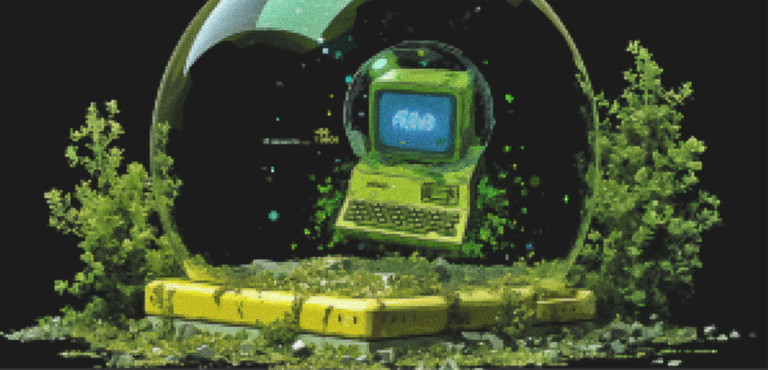
Zero Trust Security Meets AR in Surespan’s Remote Operations
Zero Trust Security is no longer optional for organizations operating in high-risk, distributed environments. For Surespan, a UK-based access and safety solutions manufacturer, this became clear as its technicians increasingly relied on digital tools while working on rooftops, construction zones, and remote industrial sites worldwide. These environments demanded secure, real-time access to critical data and expert support, often under less-than-ideal network conditions.
Until recently, Surespan depended on traditional VPNs to connect remote teams with central systems. But the rising frequency of cyberattacks and the limitations of legacy security models revealed serious operational and data protection gaps. In response, Surespan adopted a modern, proactive approach: combining Zero Trust Security with Augmented Reality (AR) to transform its remote operations.
The result is a more secure, agile, and resilient digital workflow, empowering technicians while safeguarding sensitive data at every access point.
Why are traditional VPNs no longer enough?
Surespan’s technicians accessed blueprints, live site reports, and internal systems through various devices, many of them unmanaged. Relying on VPNs created three key problems.
First, VPNs grant broad access once connected. There was no control over how much network a technician could see. Second, there were no checks for device health. An outdated or compromised device could become a backdoor for attackers. Lastly, VPNs were slow. Large files took time to transfer, and live remote support was often choppy and frustrating.
These issues became more serious as Surespan expanded its global footprint. It was clear that a more secure, flexible, and user-friendly system was needed.
What is Zero Trust security?
Zero Trust security flips the old model. Instead of assuming everything inside the network is safe, it verifies every access request based on identity, device, and location, with no assumptions or shortcuts.
This model only ensures access when a user, device, and request meet all security requirements. If anything looks suspicious, access is denied or limited immediately. It also isolates different system parts, so a breach in one area doesn’t expose everything.
Surespan adopted a Zero Trust Network Access (ZTNA) system. It replaced its VPN setup with a secure gateway that checked identity, device health, location, and risk level before allowing access. Every session was monitored and logged.
This improved security and gave the IT team real-time visibility across users, devices, and access points, something VPNs couldn’t offer.
AR support in the field: more than just a gadget
At the same time, Surespan began introducing Augmented Reality in manufacturing to improve on-site efficiency. Technicians could access remote guidance during installations or repairs using AR headsets and tablets. They could stream what they saw, while engineers at headquarters overlaid diagrams or instructions in real time.
This transformed support. Technicians no longer needed to describe problems over the phone or wait for a senior engineer to travel. Everything was visual, immediate, and far more accurate.
However, AR also brought new risks. These smart devices are often connected via unsecured networks or operated in high-risk environments. Without proper controls, they could easily become vulnerable entry points.
Bringing AR and Zero Trust together
Instead of treating AR and security as separate layers, Surespan integrated both into one streamlined workflow. Here’s how the typical support process works:
| Step | Action | Security layer |
| 1 | Technician arrives at site with AR glasses | Device identity check |
| 2 | Technician arrives at the site with AR glasses | Multi-factor authentication |
| 3 | Device checked for OS updates and threats | Compliance enforcement |
| 4 | Secure access granted to specific files or diagrams | Role-based access control |
| 5 | Remote engineer joins AR session to assist | Session encryption and monitoring |
This integration ensured field teams could work fast without exposing critical systems to unnecessary risk.
Real-world impact
The shift brought real, measurable benefits. Surespan saw a significant reduction in unauthorised access attempts within the first three months. With real-time AR support, jobs that took hours to diagnose were resolved in minutes. File transfer delays were reduced, and the need for physical site visits dropped significantly. This translated into significant savings in both cost and time. In fact, by reducing the need for engineer travel through AR-powered remote support, Surespan reported travel cost savings of over $54,000.
More importantly, technicians felt more confident and supported in the field. They no longer needed to juggle between calls and manuals. Instead, they had access to real-time expert guidance with fewer technical hiccups.
Key takeaways and the road ahead
Surespan’s journey offers practical lessons for any organisation managing remote or field-based teams:
- Solve real problems, not hypothetical ones: Technology must serve operational goals. Surespan chose AR and Zero Trust to address lag, risk and inefficiency, not to chase buzzwords.
- Build security into the workflow: Security wasn’t an afterthought. It was embedded from the first device check to the final data upload.
- Keep users at the centre: Success came from giving technicians the right tools and training, not just rolling out new software.
- Make identity your anchor: Devices and locations may change, but identity-based access ensures consistent, secure permissions.
Looking ahead, Surespan plans to bring AR-driven support into factory environments to assist with inspections, maintenance, and training. At the same time, they are exploring how AI can help automate access decisions within their Zero Trust framework, keeping security proactive and scalable.
Distilled
Surespan’s journey is a reminder that security and innovation don’t need to be at odds. By merging Zero Trust security with Augmented Reality in manufacturing, the company created a secure, efficient and future-ready remote workforce model. Remote doesn’t have to mean risky. With the right tools and mindset, it could be your biggest competitive advantage.